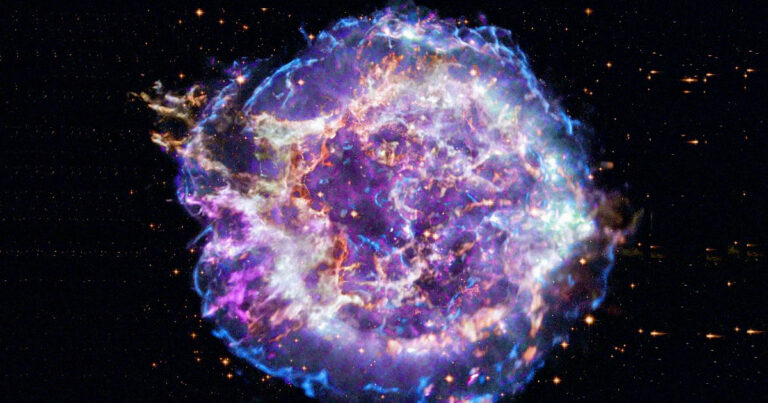NASA RELEASES HUBBLE IMAGES OF STAR RIGHT AS IT EXPLODES
“I THINK THAT’S PROBABLY ONE OF THE MOST AMAZING THINGS I’VE EVER SEEN!”
Lucky Shot
It’s incredibly unusual to witness a star’s supernova explosion in real time. Fortunately, astronomers looking through the Hubble Space Telescope’s observational data from 2010 found images of an exploding star hiding behind a galaxy cluster from around 11 billion years ago. This is the first time such an event has been detected from so early in the cosmos.
Wenlei Chen, a researcher at the University of Minnesota School of Physics and Astronomy and the lead author of a related study that was published in the journal Nature, said in a NASA statement that “it is quite rare that a supernova can be detected at a very early stage, because that stage is really short.”
“It barely lasts for hours to a few days, and even for a local detection, it may be easily overlooked,” he continued. We can witness a series of photos in the same exposure, similar to the several faces of a supernova.
Third time’s the charm?
Hubble witnessed three faces of a star’s evolving supernova explosion, thanks to a phenomenon known as gravitational lensing. Read more: https://t.co/dGbvAXeFkR
Learn more in this video! pic.twitter.com/yZbK6ZrMMJ
— Hubble (@NASAHubble) November 9, 2022
Warped Perception
By using gravitational lensing, which is a phenomena, we were able to see the distant supernova. Telescopes can view far-off objects that would otherwise be too dim because of the way a galaxy’s gravity bends and magnifies the light behind it.
Surprisingly, the warping turned out to be an even bigger help than anticipated since it allowed for the simultaneous collection of numerous photos, or “three faces,” from various eras. The numerous “routes” of light all arrived at the same time since they went different distances via the lensing and were, in fact, slowed down by the powerful gravitational pull of the lens galaxy.
The scientists were able to gauge the supernova’s pace of cooling and determine the size of the star before to its explosion thanks to that brief timelapse. They think it was a red behemoth that was more than 500 times as massive as the Sun.
The study’s lead author, Patrick Kelly, an associate professor in the University of Minnesota’s School of Physics and Astronomy, said in a release, “You see various hues in the three separate photographs. “The big star’s core collapses, creating a shock, heating it up, and then cooling over the course of a week. One of the most incredible sights I’ve ever seen, in my opinion!”
Do not forget to share your opinion with us to provide you with the best posts !




Good day! I could have sworn I’ve been to this blog before but after reading through some of the post I realized it’s new to me.
Anyways, I’m definitely delighted I found it and I’ll be book-marking and checking back often!
Great post. I was checking continuously this blog and I am impressed! Extremely helpful info specifically the last part I care for such information much. I was seeking this certain info for a very long time. Thank you and best of luck.
I care for such information much. I was seeking this certain info for a very long time. Thank you and best of luck.
Every weekend i used to visit this website, because i want enjoyment,
as this this website conations genuinely pleasant funny information too.